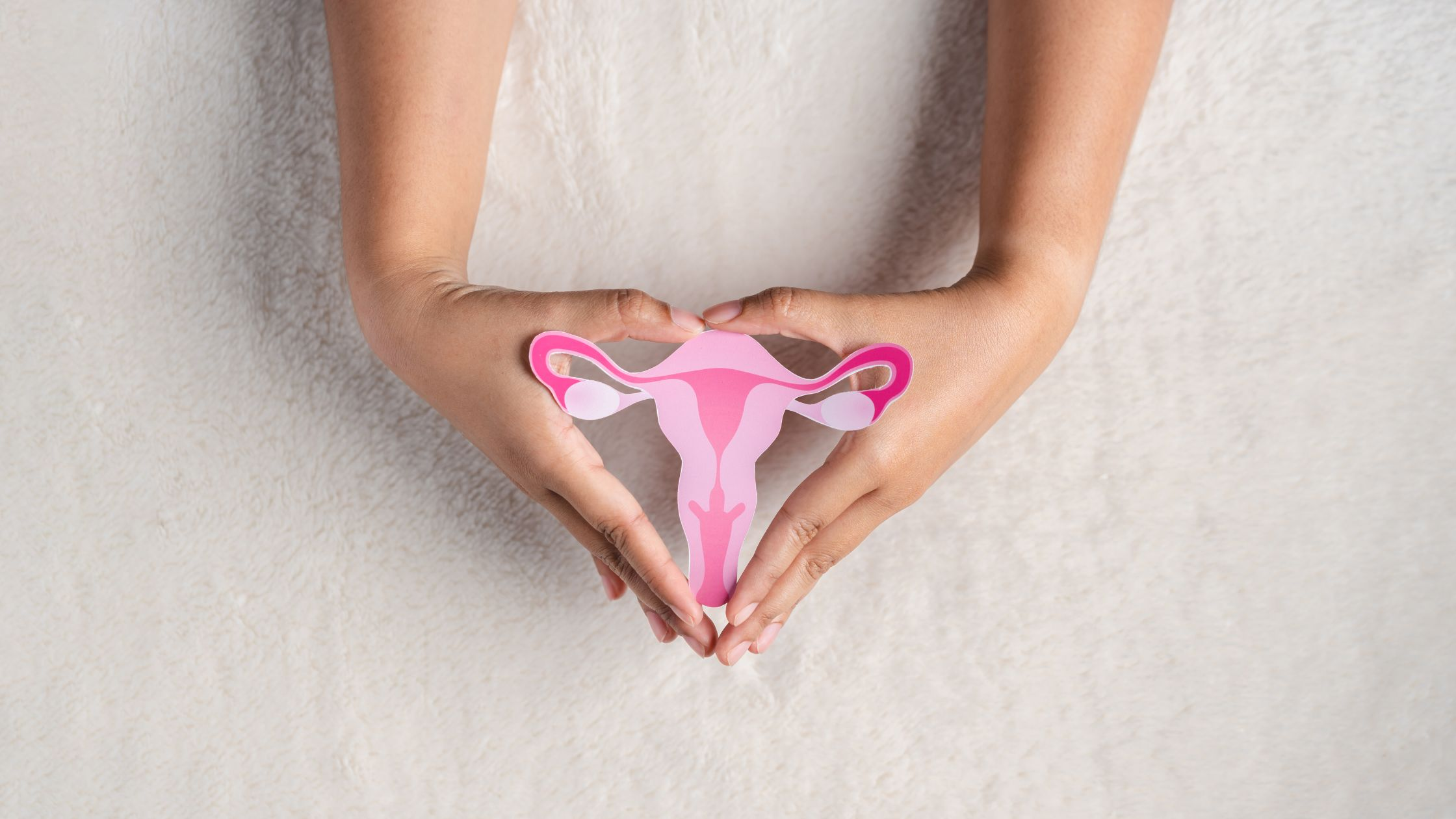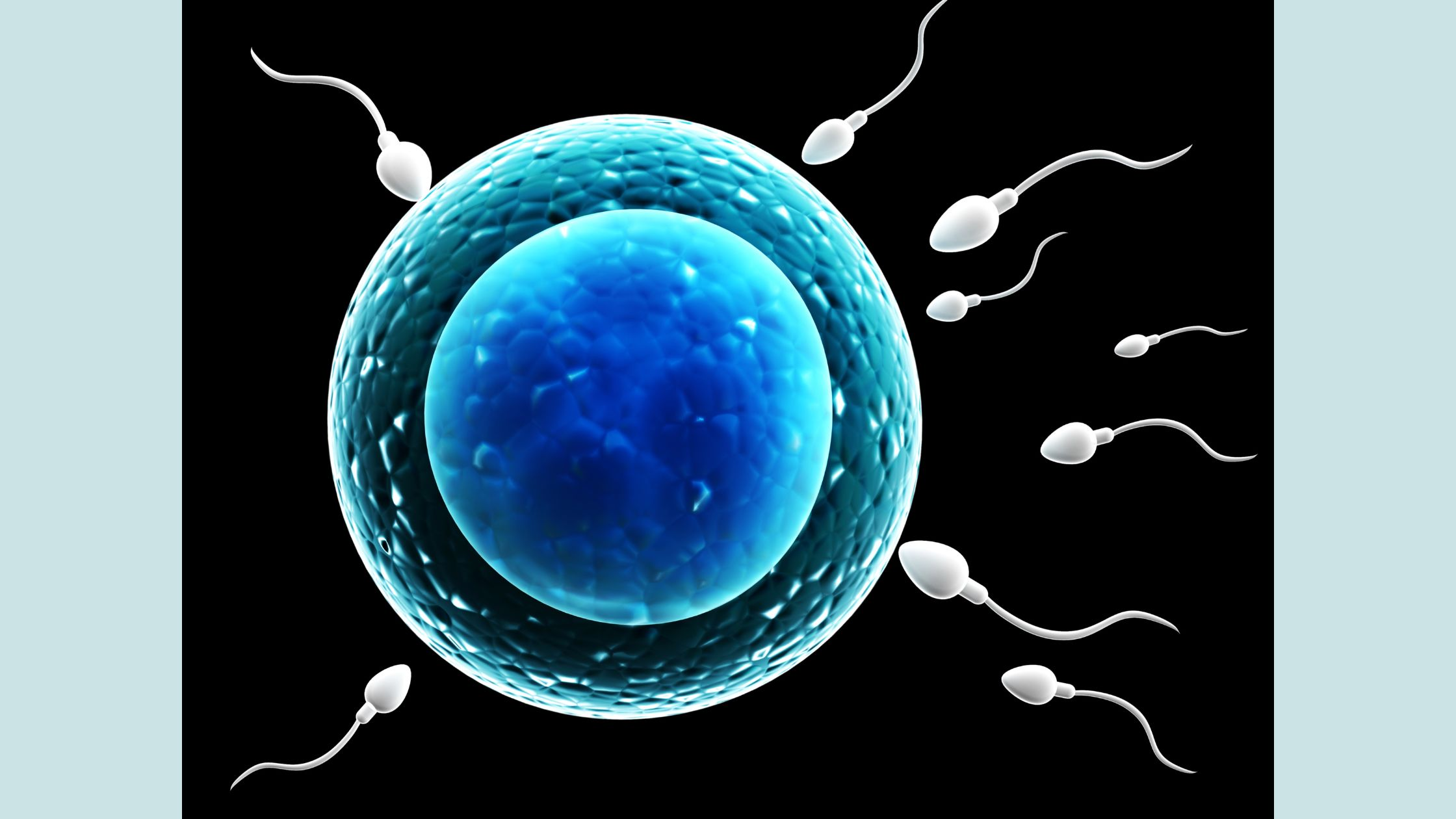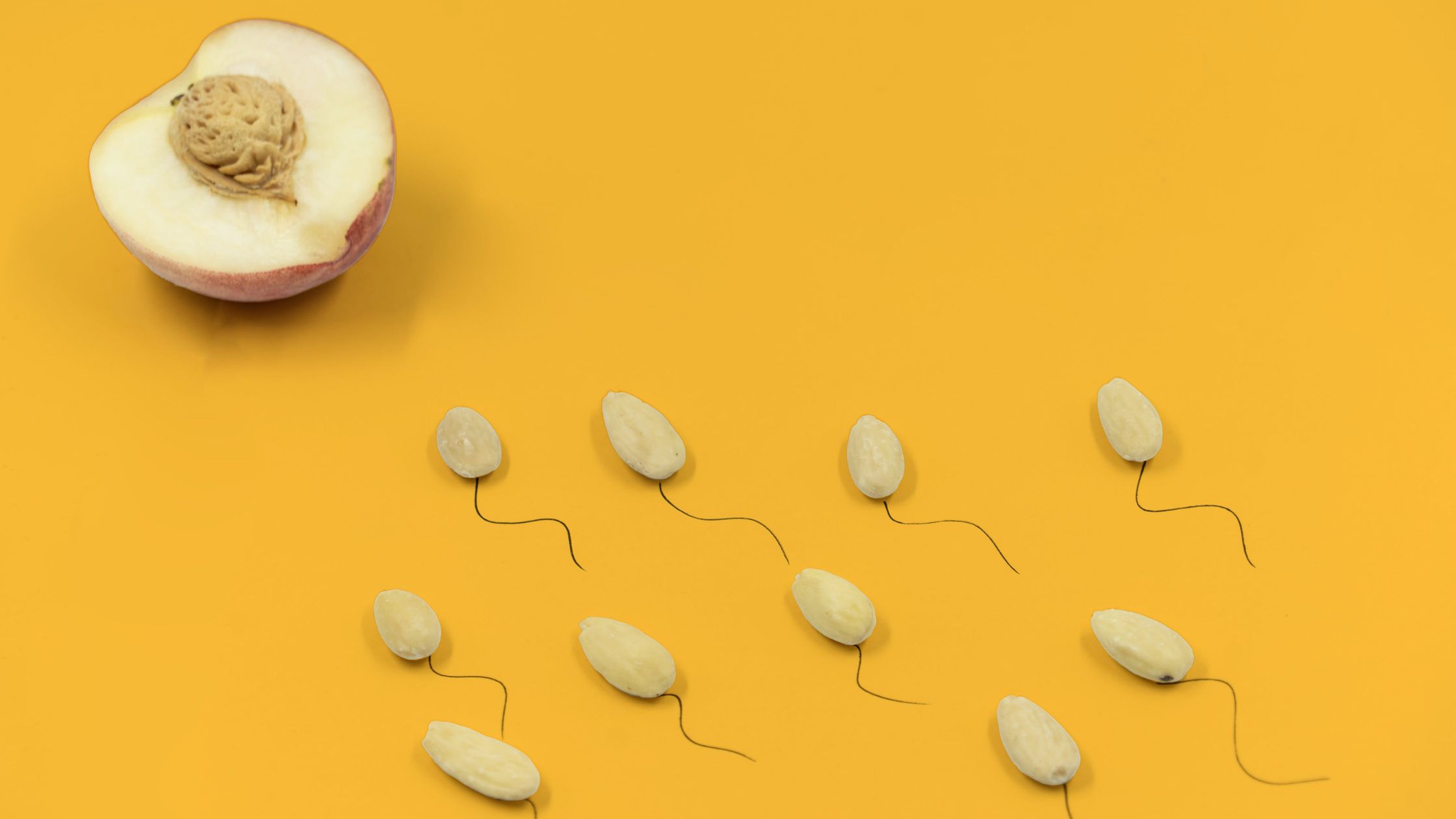The ovulation process in most women is predictable: ovarian follicles mature, one dominant follicle releases an egg, and if you’re trying to conceive (TTC) and fortune favors, the egg fertilizes, and you might get pregnant!
However, there may be an exception to this rule for some women.
Have you ever heard of hyperovulation? Yep, it’s when women ovulate more than once and potentially end up with fraternal twins.
In this post, we’ll explore the complexities of hyperovulation and multiple ovulations, looking at their potential triggers and how to recognize their symptoms.
By understanding the complexities of the female reproductive system, we can answer the question: Can you ovulate more than once a month?
What Is a Menstrual Cycle?

The menstrual cycle is a process that prepares a woman’s body for potential pregnancy each month. The cycle begins with your periods, where the uterus sheds its lining, causing vaginal bleeding.
The hypothalamus, a small part of the brain, releases gonadotropin-releasing hormone (GnRH). It signals the anterior pituitary, also known as the adenohypophysis and one of the two main parts of the pituitary gland, to release follicle-stimulating hormone (FSH) and luteinizing hormone (LH). The other section of the pituitary is called the posterior pituitary or neurohypophysis.
The menstrual cycle length can vary, but on average, it’s about 28 days from the start of one period to the beginning of the next. However, a real-world study involving over 600,000 menstrual cycles found that the mean length was slightly longer, about 29.3 days. And just like people, no two cycles are the same; cycle length can decrease slightly with age and varies per individual.
The cycle begins at puberty, typically between the ages of 10 to 16, and ends at menopause.
What Is Ovulation?

One of the ovaries releases a mature egg during the ovulation phase of the menstrual cycle. It usually happens in the middle of regular menstrual cycles, around the 14th day if you have a typical 28-day cycle, but it could vary from person to person.
Your body prepares for this by releasing two hormones, follicle-stimulating hormone (FSH) and luteinizing hormone (LH). FSH prepares your eggs, and LH tells your ovary to release a mature egg.
Between the 6th and 14th days of your cycle, eggs grow inside tiny fluid-filled sacs in your ovary called follicles.
After the egg is released, it moves down the fallopian tube, which connects your ovary to your uterus, and waits up to 24 hours.
If the sperm meets the egg at this time, they can join together and move to the lining of your uterus, where they stick and start to grow into a baby. If the egg doesn’t meet the sperm, it leaves your body during your next period.
Most women ovulate every 21 to 35 days, and a different ovary releases an egg each month.
How Many Times Can Ovulation Occur in a Month?
During each menstrual cycle, only one ovulation can occur. However, the ovaries can release two (or more) eggs simultaneously, and if both eggs get fertilized, they produce fraternal twins.
Fraternal twins form when two separate sperm cells fertilize two different eggs. As for fraternal multiples, they result from additional eggs fertilized by further sperm.
However, a question arises: Don’t women typically release just one egg per ovulation cycle?
Generally, this is true. “But occasionally, women undergo hyperovulation or multiple ovulation, releasing various eggs within the same menstrual cycle. This can happen in two ways:
- Each ovary releases an egg.
- A single ovary can release two eggs.
Therefore, twins or multiples come from a single ovulation event that releases more than one egg, not from ovulating twice a month.
A common misconception is combining the number of times you can ovulate per cycle with the number of eggs you can release during a single ovulation event.
Some mistakenly think that the release of two eggs equates to two ovulation events. However, a single ovulation occurrence can release several eggs within 24 hours. The release of two separate eggs at different times within the same cycle does not typically occur.
Can You Ovulate Twice in a Month?

A study done in 2003 suggests that a woman might release two (or more) eggs in a month. If this is true, it could explain why sometimes fraternal twins are born on different days. It might also explain why sometimes birth control doesn’t stop pregnancy.
Throughout your menstrual cycle, there can be several instances of follicular growth. Although ovulation occurs only once, the final surge of LH can result in the release of two or more eggs simultaneously. This happens because the ovaries release multiple eggs in the same cycle (hyperovulation) or through multiple ovulation.
However, the study’s authors could not confirm whether the ovaries released two fully mature eggs at different points during the monthly cycle, expressing uncertainty.
Multiple Ovulation
Although a singular increase in LH levels is typical, your egg delivery system can develop in waves instead of just before ovulation. Research suggests that three types of LH surges or waves of follicle development gradually occur over 2-6 days.
1. Single Peak
In a single peak ovulation, the luteinizing hormone (LH) surges once during the menstrual cycle, releasing an egg from the follicle. This type of ovulation is what most women refer to when talking about the ‘fertile window.’
2. Plateau
In a plateau pattern, the LH levels rise and then maintain a consistent level for 2-3 days before dropping again. Ovulation occurs following the last highest peak. During this plateau period, ovulation can happen more than once.
3. Multiple Peaks
In rare cases, a woman may experience multiple peaks of LH during her cycle. Tracking and interpreting multiple peaks in your LH surge can be confusing.
These peaks show various ups and downs within a cycle. It is possible to experience more than one significant rise in LH, followed by a decrease and another rise.
Testing and tracking your cycle (using ovulation predictor kits) makes it easier to pinpoint the exact moment of ovulation, particularly if you have irregular LH surges.
What Is Multiple Ovulation?
Typically, the ovary releases one egg during a menstrual cycle.
But when both ovaries release eggs, this is known as multiple ovulation. This usually happens within 24 hours of the release of the first egg.
If sperm fertilizes more than one egg, it can produce fraternal (non-identical) twins, triplets, or even more multiples.
This differs from identical twins, where a single fertilized egg splits into two.
What Causes Multiple Ovulation?
Various factors can cause multiple ovulation:
- Age: Women in their late 30s are more likely to have multiple ovulation, as changes in hormone levels can lead to the release of two or more eggs.
- Genetics: Some women are genetically predisposed to releasing multiple eggs during their menstrual cycle.
- Fertility treatments: Certain fertility medications and treatments, like Clomid or injectable hormones, stimulate the ovaries to produce and release more than one egg to increase the chances of conception.
- Weight: Being overweight or obese can sometimes affect hormone production and lead to multiple ovulation.
It’s important to note that having multiple ovulation doesn’t guarantee the conception of twins or multiples. It just increases the chances because sperm can fertilize more than one egg.
What Are the Symptoms of Multiple Ovulation?
Multiple ovulation often doesn’t have distinct symptoms and can feel like a normal menstrual cycle.
However, some women may notice increased signs of ovulation, like more pronounced mid-cycle pain (mittelschmerz), a longer-lasting or more noticeable increase in basal body temperature, or increased cervical mucus.
However, these symptoms are not definitive proof of multiple ovulation and can occur with regular ovulation.
Hyperovulation
During each menstrual cycle, a select few follicles compete to determine which will become the largest and most dominant to release an egg. Although your body may prepare to release multiple eggs, as indicated by the occurrence of various LH surges, typically, only one egg is released during ovulation. Occasionally, however, more than one egg is released, referred to as hyperovulation.
What is Hyperovulation?
The ovaries might release several eggs in one cycle when multiple dominant follicles are present. This is called hyperovulation and can raise the likelihood of having multiples. Hyperovulation can increase the chances of having fraternal twins or multiples.
What Causes Hyperovulation?
Research suggests that some women may have naturally elevated levels of FSH or release FSH more frequently, which can lead to this condition.
Additionally, hormone-based medications commonly used in fertility treatments can induce excessive follicular development and the release of multiple eggs.
Other factors such as age, genetics, discontinuation of birth control, and experiencing a miscarriage also play a role in hyperovulation.
What Are the Symptoms of Hyperovulation?
Similar to multiple ovulation, ultrasound is the only conclusive method to identify hyperovulation. While there might be a slightly increased amount of vaginal discharge, there are no definitive indications or apparent symptoms of hyperovulation.
Takeaway
- While ovulation typically involves the release of one egg per menstrual cycle, some women may release multiple eggs in a process known as hyperovulation or multiple ovulation.
- Multiple ovulation can increase the chances of conceiving fraternal twins or multiples, but it doesn’t necessarily mean two separate ovulation events.
- Factors like age, genetics, fertility treatments, and weight can influence the likelihood of multiple ovulation.
- Identifying multiple ovulation or hyperovulation can be challenging, as they often don’t present with distinct symptoms; an ultrasound is the most conclusive detection method.
References
Thiyagarajan DK, Basit H, Jeanmonod R. Physiology, Menstrual Cycle. [Updated 2022 Oct 24]. In: StatPearls [Internet]. Treasure Island (FL): StatPearls Publishing; 2023 Jan-. Available from: https://www.ncbi.nlm.nih.gov/books/NBK500020/Bull, J. R., Rowland, S. P., Scherwitzl, E. B., Scherwitzl, R., Danielsson, K. G., & Harper, J. (2019). Real-world menstrual cycle characteristics of more than 600,000 menstrual cycles. Npj Digital Medicine, 2(1), 1-8. https://doi.org/10.1038/s41746-019-0152-7Cleveland Clinic. (n.d.). Ovulation: Calculating, Timeline, Pain & Other Symptoms. Retrieved July 29, 2023, from https://my.clevelandclinic.org/health/articles/23439-ovulationJohns Hopkins Medicine. (n.d.). Menstrual Cycle: An Overview. Retrieved July 29, 2023, from https://www.hopkinsmedicine.org/health/wellness-and-prevention/menstrual-cycle-an-overviewYour Period. (n.d.). Menstrual Cycle Basics. Retrieved July 29, 2023, from https://www.yourperiod.ca/normal-periods/menstrual-cycle-basics/Dyer, O. (2003). Women may ovulate two or three times a month. BMJ : British Medical Journal, 327(7407), 124. https://www.ncbi.nlm.nih.gov/pmc/articles/PMC1126506/Sharma, R., Biedenharn, K. R., Fedor, J. M., & Agarwal, A. (2012). Lifestyle factors and reproductive health: Taking control of your fertility. Reproductive Biology and Endocrinology : RB&E, 11, 66. https://doi.org/10.1186/1477-7827-11-66Lambalk, C. B., Boomsma, D. I., de Boer, L., de Koning, C. H., Schoute, E., & Schoemaker, J. (1998). Increased Levels and Pulsatility of Follicle-Stimulating Hormone in Mothers of Hereditary Dizygotic Twins. The Journal of Clinical Endocrinology & Metabolism, 83(2), 481-486. https://doi.org/10.1210/jcem.83.2.4552
